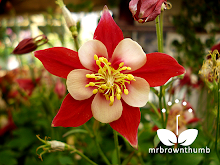Ancient Hills of Sialk
The old hills, and surroundings of Sialk, situated southwest of Kashan, include two northern and southern hills, 600 meters apart from each other. Sialk has two cemeteries which are respectively 3500 and 300 years old. The first is built on rout a boulevard and second is placed under gardens and agricultural lands.
In 1933, a French delegation led by Professor Romen Gishmen, was put in charge of excavation projects in Sialk who carried out this task during three excavating seasons in 1933, 1034 and 1937. a report of their findings entitled "Sialk of Kashan" was published in 1938 in the French language in two Paris magazines.
70years later, an Iranian team LED BY Dr. Sadegh Shahmirzadi, began another investigation in two northern and southern hills, which lasted for five seasons, from 2001 to 2006.
Based on archeological investigations carried out by both the French and Iranian teams, 6 cultural periods were differentiated in ancient hills of Sialk.
During the first and second period, the original inhabitants of Sialk lived in homes made from branches and reeds, but later progressed into making houses from mud. Pottery was handcrafted and decorated with pictures of plants and animals. Food was provided mainly through hunting, animal husbandry and farming, and to make jewelry, natural streaks of copper were employed.
In the third era which started from 6100 years ago, the inhabitants migrated from the northern to southern hill, and began to utilize molded rectangular mud for construction purposes. The pottery wheel was introduced in the middle of this era and clay objects were cooked in special furnaces where the temperature could be controlled. Obtaining silver from mines was another discovery of this period which led to the start of making silver jewelry.
The most important event of the fourth era, which began 5000 years ago and continued for 500 years, was the introduction of early print and writing, as well as the making of cylindrical stamps, and small rough bowls.
The fifth era has a 3200 year history and belongs to immigrants who had just entered Sialk. Construction of houses on top of those existing from previous eras and use of gray colored ceramics are the remnants of this period, in addition to burying pottery, metal tools and beads along with the dead. During the sixth period which started 2900 years ago and continued for 100 years, a new population entered the region and southern hill. In this era the entire surface of the hill was leveled and therefore, the homes remaining from previous times were completely destroyed and instead new constructions began. People of this age, buried ceramics and metal utensils along with their dead, and covered the graves with carved stones or large bricks. The clay objects found in cemeteries during this time generally resembled animals and birds with geometric animal and human figurines covering their entire surface.

